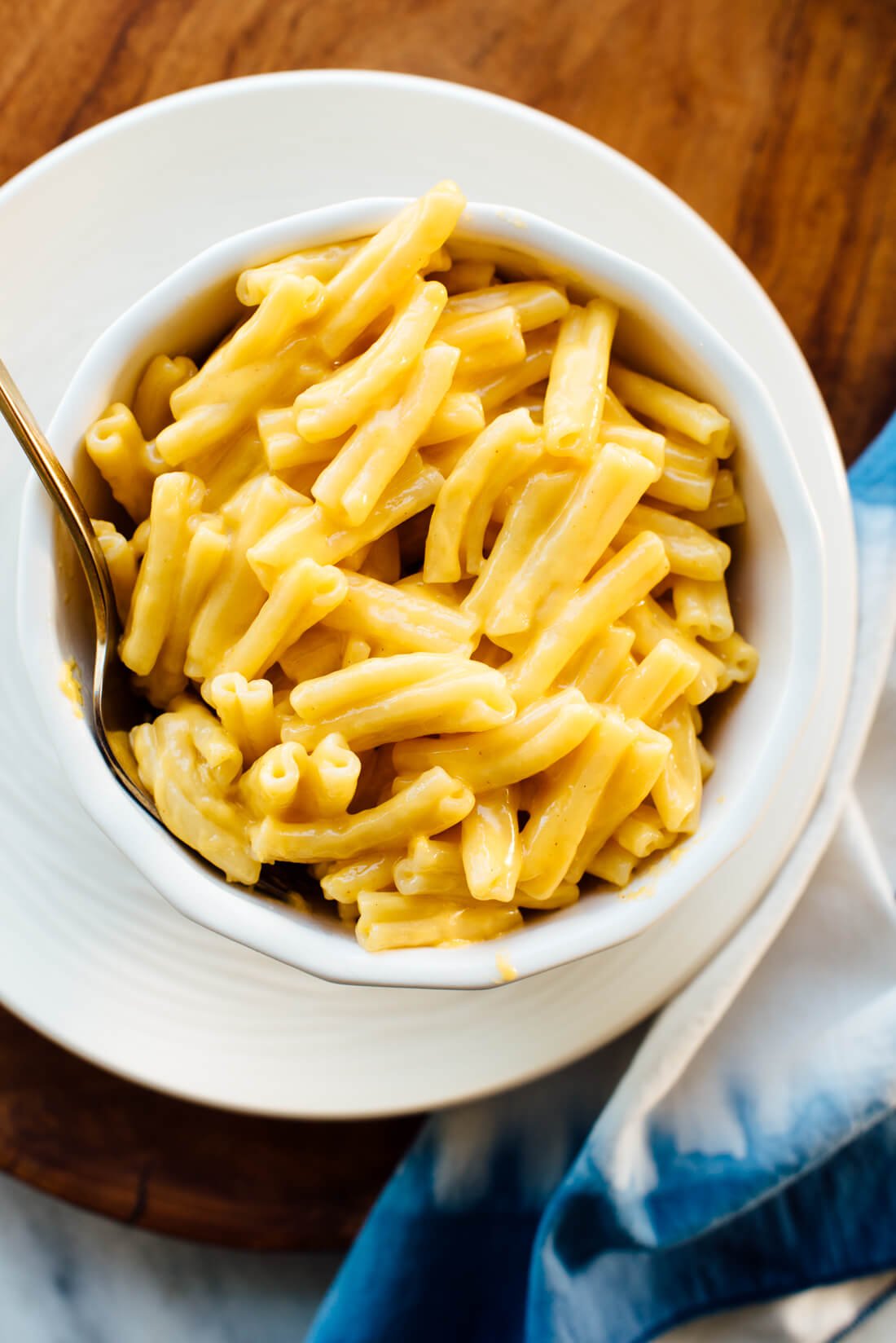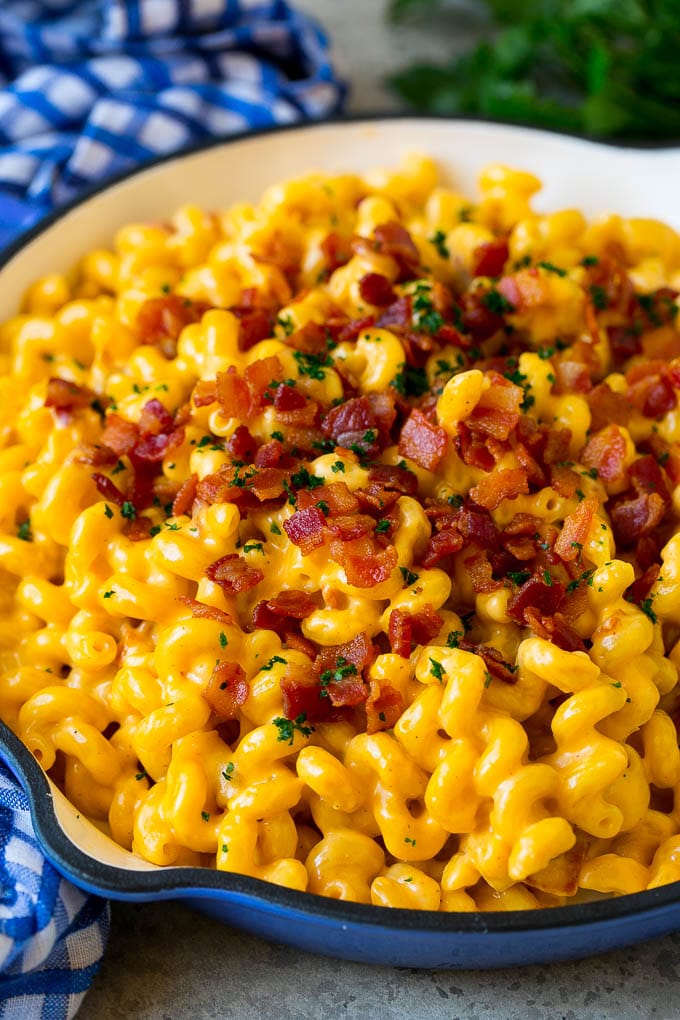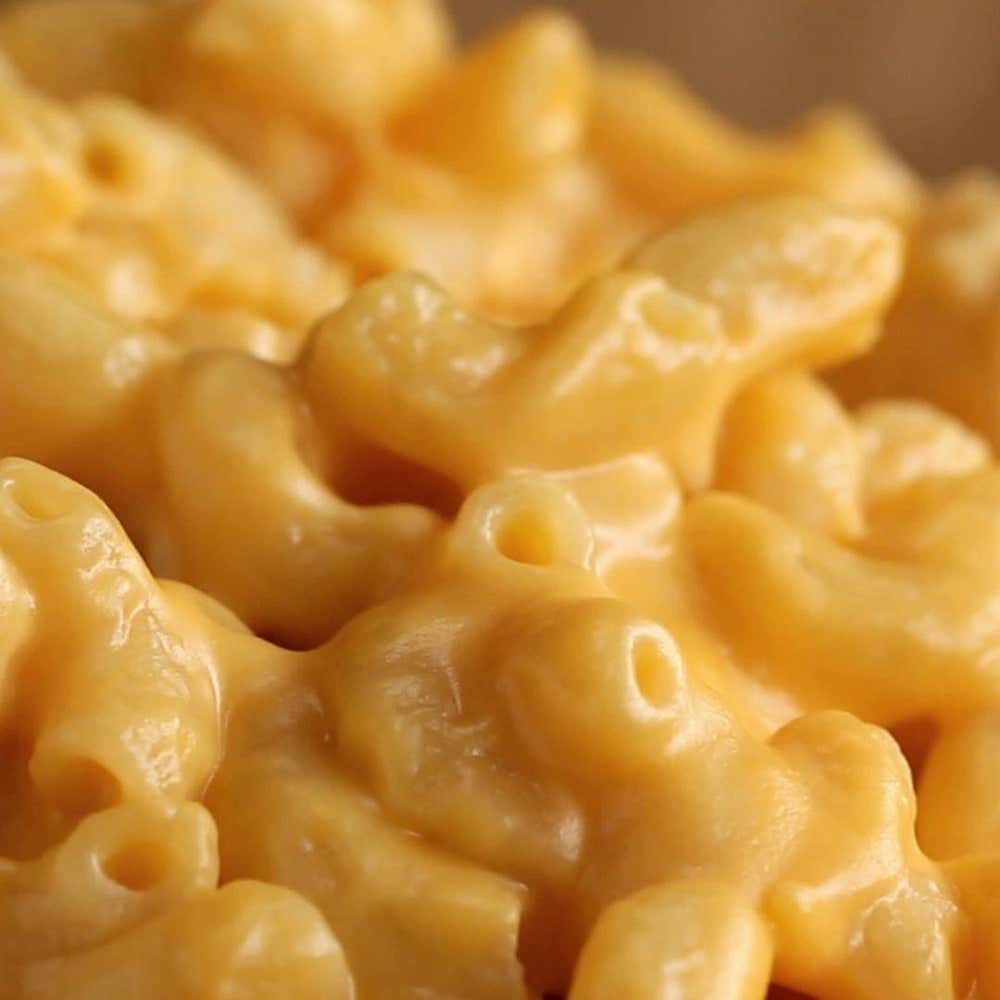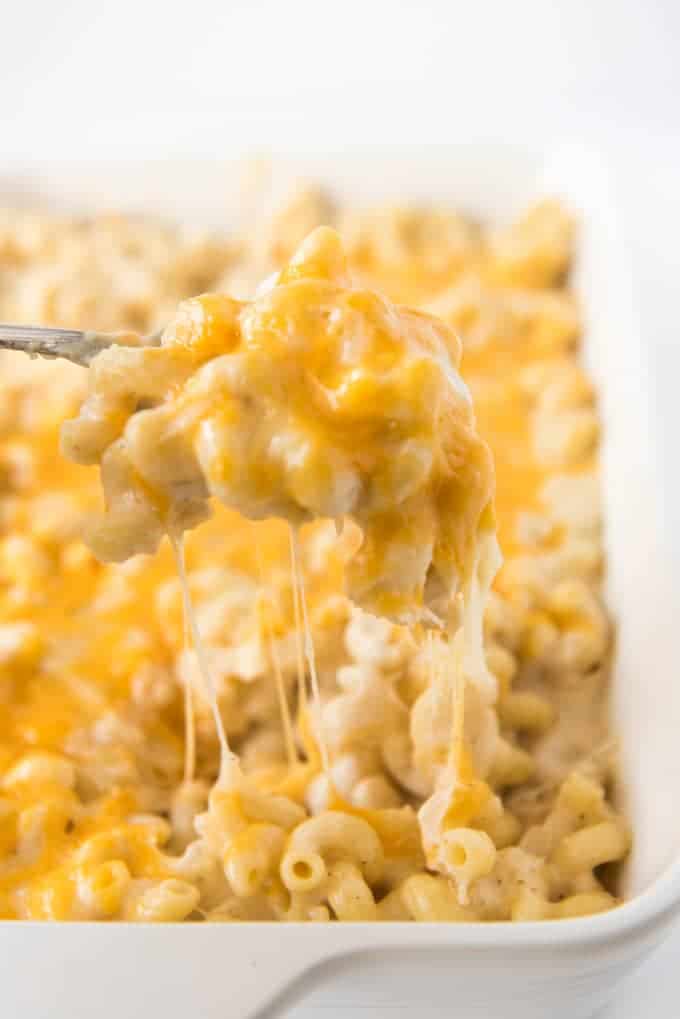- How To Make Homemade Cheese For Mac N Cheese
- How To Make Homemade Cheese For Mac And Cheese
- How To Make Cheese For Mac & Cheese
We’re sure you know it well. The final step in mastering–or messing up–this recipe is the pasta. In fact, one of the easiest mistakes when making macaroni and cheese is using the wrong kind of pasta. We suggest steering clear of long, thin, perfect-for-twirling varieties like spaghetti, fettuccini, and linguini.
Instant macaroni and cheese might pass the college dorm test — and we all know there's a time and a place for that blue box of Kraft Macaroni & Cheese.
- If you're a blue cheese lover and want to try it with the blue cheese, scale back the white cheddar to 3/4 cup and add 1/2 cup of blue cheese. Every time I make this mac and cheese I get compliments. It's a long process but the end result is so worth it.
- Not a traditional candidate for mac and cheese, feta is the true underdog here. The tangy taste is fun addition to other staple cheeses. Just be careful not to add too much salt to your mac and cheese since feta is quite salty on its own. Brie Jayna Goldstein. The super creamy texture of Brie adds a great richness and creaminess to the dish.
But we all learn eventually that nothing beats the real stuff. When it's done right, homemade mac and cheese has the potential to be truly transformative — the stuff dreams are made of. If you don't agree, then you haven't had the good stuff.
Luckily for all of us cheesy carb lovers, this meal is simple to whip up from scratch. Like most dishes you'll cook, half the battle is won (or lost!) when you're choosing your ingredients in the grocery aisles. Whether it's baked for an irresistibly crunchy top, or cooked on the stovetop for maximum creaminess, this perennial comfort food requires the right cheese in order to fulfill its dinnertime destiny. To help you get started on your mac game, here's a down-and-dirty guide to the major players at the market.
These are the best cheeses to use in your homemade mac and cheese.
Classic sharp cheddar in mac and cheese is always a crowdpleaser
Firm, rich, and relatively mellow, cheddar cheese gets its name from the English town where it originated. One of the most popular varieties of cheeses in the U.S., it is beloved for its melting powers and smooth flavor.
While this cow's milk cheese is an ideal choice for grilled cheese sandwiches and general snacking, cheddar has also made quite a name for itself as the go-to choice for traditional all-American mac and cheese. You simply can't go wrong.
Gruyere cheese adds mature flair to mac and cheese
Made from cow's milk, Gruyere borrows its name from a village in Switzerland. This hard cheese is prized for its complex flavor profile.
With subtle sweet notes that complement earthy, nutty ones, Gruyere easily adds depth of flavor to a variety of dishes. From gratin and fondue to burgers and grilled cheese, this winning Swiss cheese delivers the goods. It lends mac and cheese just the right touch of grownup sophistication.
Smoked Gouda lends meaty flavor (minus the meat) to mac and cheese
Named after the Dutch city it hailed from, Gouda is a semi-soft cheese appreciated for its smooth, creamy texture and mild flavor.
While a majority of Gouda is made with cow's milk, some types are made from sheep's or goat's milk. Young Gouda is rich and mellow, while aged varieties possess a deeper, more pungent flavor. If you want to infuse robust, bacon-adjacent notes to your mac and cheese, try using smoked Gouda. You will not be disappointed.
Monterey Jack creates creamy mac and cheese
An American cow's milk cheese with origins in Monterey, California, the aptly named Monterey Jack is easy to love. At once firm and creamy, it melts like a dream, making it the perfect choice for all your gooey cheese needs. Buttery in texture and very mild, like cheddar, Monterey Jack is an easy choice for mac and cheese that both children and adults can get on board with. For deliciously melty, smooth, velvety mac and cheese, we highly recommend you try some Jack.
Brie is creamy, decadent, mac and cheese dream come true
Named after a region in France and literally eaten by kings, soft-ripened Brie is buttery, runny, and creamy like you wouldn't believe. Its flavor ranges from mild to extremely nutty and tangy, depending on what you get your hands on at the store.
This creamy wonder is the right way to go if you're looking to make mac and cheese that's sure to impress. Luxurious and decadent, this rich cheese promises to instantly take your humble mac and cheese to the next level.
Aged cheddar and Parmesan team up to make perfect mac and cheese
The sharper, more complex flavors of aged cheddar team up well with salty Parmesan cheese. This combo is amazing in grilled cheese sandwiches — and the same goes for mac and cheese.
Italian Parmesan's slightly fruity, subtly nutty notes and grittier texture pair beautifully with the smoother, creamier mouth feel of cheddar. Make this mac and cheese. Your stomach will thank you.
You'll go gaga for goat cheese mac and cheese
Whether it's used as the star attraction, or to complement other cheeses, nothing puts a 'what is that flavor?' zing into your homemade macaroni and cheese quite like goat cheese can.
Goat cheese (called 'chevre' when it's from France), comes in many varieties and can range from a creamy tanginess to a crumbly grassiness that is beloved by cheese lovers across the globe. Try melting it into a classic stovetop cheese sauce for a macaroni and cheese that can go straight to your plate, or into the oven for a bronzed crunch.
Fontina makes fabulous mac and cheese
Hailed for its unique versatility as both a table cheese and a cooking cheese, fontina is a crowd-pleasing, melty cheese that will work beautifully in many macaroni and cheese recipes.
Fontina is a cow's milk cheese that has been crafted in Italy since 1477 but is also widely available in both Swedish and Danish styles which are recognizable by their red wax wrapping. Skip the pricier varieties that are more suitable for serving on a cheese board, and instead opt for a mid-priced fontina that is ideal for cooking. With a flavor that balances earthiness with a buttery mouthfeel, fontina is a cheese you'll definitely be reaching for again.
Havarti creates heavenly mac and cheese
Havarti and cream havarti are cheeses that, like fontina, are also prized for their versatility as a slicing cheese and a cooking cheese. The semi-soft cow's milk cheese, cream havarti, was developed in the 19th century in Denmark and can often be found blended with herbs and spices like dill, caraway, or even jalapeno peppers.
Aged for three months, havarti's flavor can range from mild to strong and is often seen on dessert cheese plates. Its buttery meltiness makes havarti a welcome addition to a delicious homemade macaroni and cheese.
Cream cheese makes delicious mac and cheese
A true American invention, recipes for cream cheese filled American cookbooks and newspapers as far back as the 1700s. In 1872, an upstate New York dairy factory that was manufacturing the lighter French variety of cheese known as Neufchatel, decided to shake things up a bit by adding cream to the cow's milk cheese recipe. The rest is history.
Though many store-bought brands contain gums and stabilizers to preserve the stability of the fresh cream cheese, purely crafted artisan brands are available in specialty markets that will send you straight to cream cheese heaven. The USDA mandates that cream cheese be at least 33 percent fat, making it a fantastically creamy choice for your mac and cheese. Try blending its creaminess with a cheese of a bolder flavor for delicious results.
Cottage cheese is surprising and economical choice for mac and cheese
Cottage cheese is a fresh, unripened curd cheese that is valued for its high protein content and mild, sweet flavor. Often used as a lower-fat substitute for heavier cheeses in many recipes, cottage cheese's unique texture has also found a place in more decadent recipes.
Try the New York Times' recommendation for a mixture of cottage cheese and sharp cheddar for a classic elbow macaroni and cheese dish, or consider adding in some sour cream for a tangy kick.
Raclette is made for melty mac cheese
The very name 'raclette' is used to describe the famous dish of gooey cheese, scraped onto a waiting mound of bread or potatoes, as well as the cheese itself.
Made with cow's milk from the grasslands of the French and Swiss Alps, raclette is similar in texture to Gruyere cheese, with a distinctive aroma. Like Gruyere, raclette does not separate when melted, making it a great cooking cheese and one that would lend a nutty and refined flavor to any mac and cheese recipe.
Boursin makes a brilliant mac and cheese
Sometimes called Gournay cheese, boursin is a French cream cheese that can readily be found in your supermarket's appetizer section. It's a buttery and easily spreadable cheese that's brilliant on bread, crackers, and crudite, and comes in a vast array of herb and spice infused flavors.
Highly meltable, boursin will add a pop of intense, complex flavor to your homemade macaroni and cheese recipe. Suffering sticker shock from your grocery store's boursin price tag? Try your hand at making it homemade: cream cheese, butter, and your choice of herbs and spices can be blended for a more economical version.
Mascarpone creates magnificent mac and cheese

Mascarpone is an Italian double- or triple-cream soft cheese that is often the shining star of dessert dishes like Italian cheesecakes or tiramisu. Its high fat content, however (it's been likened to a cross between cream and butter), makes mascarpone an excellent choice for savory dishes as well.
Celebrity chef Michael Symon makes his mouth-watering mac and cheese with a blend of mascarpone, cheddar, and half and half. Over at The New York Times, Melissa Clark combines mascarpone with Brie and cream cheese for a mac and cheese with an undoubtedly velvety finish.
Creamy and carby macaroni cheese is the perfect comfort food for cold weather.
Also known as mac 'n' cheese and macaroni pie, macaroni cheese is a comfort food favourite. It’s inexpensive, simple to make and can be eaten as a main or as a side, plus mixed with or topped with all sorts of lovely extras.
Italian in origin, versions first featured in the English cookbook, Forme of Curry, as far back as medieval times. Recipes continued to appear in 18th- and 19th-century cookbooks; the famous Victorian writer Mrs Beeton advocated ‘tender but perfectly firm’ pasta and it’s still cooked al dente today. In the US, third president Thomas Jefferson is credited with introducing the dish to the States.
Here’s how to make the best-ever macaroni cheese at home.
svariophoto/Shutterstock
1. Pick the right pasta
Macaroni comes in different shapes and sizes. Long, short, curly and ridged tubes are suitable for the dish but it’s the curved elbow macaroni that’s used most often.
Other pasta shapes such as campanelle, conchiglie and penne are good because these shapes collect sauce, though purists argue that without macaroni it's just a cheesy bake. Avoid miniature shapes as these can become mushy.
The macaroni should be cooked in a large pan of boiling salted water for around 8 minutes (though packet instructions vary). It's smaller than some pasta shapes, so you won’t need long to get it al dente. It's important to keep the pasta firm as it will continue to cook once added to the cheese sauce, and you want to keep some texture in this soft and creamy dish.
If you want to incorporate extra flavour, consider cooking the pasta in chicken or vegetable stock or a mix of half water and half stock.
Roman50/Shutterstock
2. Perfect your sauce
Traditionally, a mac ‘n’ cheese base is made from béchamel sauce. This start with a roux, made by combining melted butter with plain flour then slowly whisking in milk, stirring continually until it thickens. When grated cheese is added and stirred until melted, it effectively becomes a mornay sauce. Make sure it’s thick enough; you need a sauce that will coat pasta, not a soup.
Cheddar is the standard cheese choice but using only one type of cheese can result in a one-dimensional dish. Instead, go for a blend of easy-to-melt cheeses by combining gouda, gruyère or emmental with mature cheddar. Whisk in finely grated parmesan for a savoury pungency or comté for a French flavour.
As the sauce can be rich it’s also worth lifting it with a sprinkling of nutmeg or paprika, infusing it with a bay leaf or two, or adding a dollop of mustard and some dried oregano.
How To Make Homemade Cheese For Mac N Cheese
3. Go big on toppings
Mac ‘n’ cheese benefits from toppings because they add texture and hints of other flavours to offset the creamy richness.
A hearty sprinkling of breadcrumbs or crumbled crackers is tried and tested, as is fried, spiced beef mince for something meaty. For something fresher try this recipe with grilled tomatoes, or go for chopped spring onions, herbs or chilli.
Once you've combined your drained pasta and sauce, and added your toppings, transfer to an ovenproof dish. You can then place under a hot grill to crisp up or bake in a hot oven until brown.
What's for dinner? Second helpings/Romilla Arber
4. Make a deluxe version
How To Make Homemade Cheese For Mac And Cheese
For an even more indulgent dish, incorporate ham, lardons, bacon, pancetta or lobster tails into the mix – or if you’re feeling really decadent grate truffle over the top. We love this recipe for crayfish mac 'n' cheese with chorizo.
Another option is to combine cauliflower cheese with mac ‘n’ cheese to make cauliflower mac ‘n’ cheese. Add cut cauliflower as you're boiling the pasta, just a few minutes before draining, then combine with the cheese sauce and grill until bubbling.
Alternatively, lighten this dish by using skimmed milk when making the béchamel and limit the cheese by using less of a strongly flavoured one. Cooked broccoli, spinach or red pepper will also pad out the dish so you eat less pasta and more veg.

There’s also no need to give up mac 'n' cheese if you’re vegan or lactose-intolerant. To make the sauce swap dairy for dairy-free margarine, soya milk, vegan cheese, plus English mustard and nutritional yeast to create a cheesy tang.
Kiian Oksana/Shutterstock
5. Learn some shortcuts
For a one-pot version that saves on washing up, you can stir in mix of soft cheese, such as mascarpone, along with grated cheese to almost-cooked pasta to create a sauce of sorts. Sprinkle in more hard cheese, if desired, or bits of mozzarella, which will melt creating a delectable stringy cheese finish.
For mac 'n' cheese with just three ingredients, firstly cook the pasta in milk on a simmer rather than a boil so the milk isn’t scorched. This takes longer, around 15–20 minutes. Towards the end stir in grated cheese and season for a worthy three-ingredient alternative to the classic.

Handmade Pictures/Shutterstock
6. Don't forget about leftovers
It's rare to have any leftovers but on the off-chance you do, you can use cold mac ‘n’ cheese to make a type of arancini, a traditional fried snack from Italy. Simply shape your leftover mac 'n' cheese into balls, dip in flour, egg and breadcrumbs then deep fry. You may just need to chop the pasta into slightly smaller portions first

Into toasties? Have your very own carb party and put the mac ‘n’ cheese between two slices of bread and either pan fry or use a sandwich maker for a treat within a treat.
For little pasta pies that can be eaten with a salad or in a packed lunch, dollop cold leftover mac ‘n’ cheese into individual muffin tin compartments and bake at 180°C/160°C/fan 350°F/Gas Mark 4 for around 20 minutes.
How To Make Cheese For Mac & Cheese
Vm2002/Shutterstock
You might also like:
